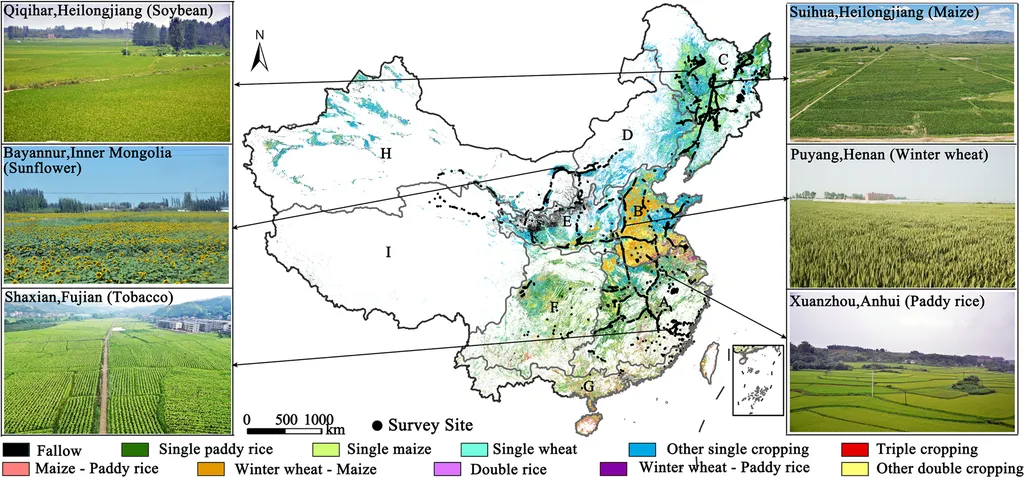In the heart of southern China lies the Jianghan Plain, a region known for its complex cropping systems and persistent cloud cover that has long posed challenges for accurate agricultural monitoring. However, a groundbreaking study led by Pengnan Xiao from the Institute of Agricultural Resources and Regional Planning at the Chinese Academy of Agricultural Sciences is changing the game. By leveraging multisource remote sensing data and advanced machine learning techniques, Xiao and his team have developed a method to map crop planting patterns with unprecedented accuracy, offering valuable insights for sustainable agriculture and food security.
The research, published in the journal *Remote Sensing* (translated as “Remote Sensing” in English), integrates multi-temporal Sentinel-2 and Landsat-8 imagery from 2017 to 2021, processed on the Google Earth Engine platform. The team employed a sample migration strategy to construct multi-year training data, enabling them to identify nine major planting patterns at a 10 m resolution. “The key was to combine different data sources and apply a robust classification algorithm,” explains Xiao. “This approach allowed us to achieve an average overall accuracy of 88.3%, with annual Kappa coefficients ranging from 0.81 to 0.88.”
The spatial analysis revealed that single rice was the dominant pattern, covering more than 60% of the area. Temporal variations in cropping patterns were categorized into four frequency levels (0, 1, 2, and 3 changes), with more dynamic transitions concentrated in the central-western and northern subregions. “Understanding these patterns is crucial for optimizing land use and developing targeted agricultural policies,” Xiao notes.
The study also employed a multiscale geographically weighted regression (MGWR) model to identify the driving mechanisms behind these planting patterns. Economic and production-related factors were found to have strong positive associations, while natural factors showed relatively weaker explanatory power. This nuanced understanding can help stakeholders make informed decisions that balance economic growth with environmental sustainability.
The implications of this research extend beyond the Jianghan Plain. As Xiao points out, “Our method is scalable and can be applied to other regions with complex agroecosystems.” This could revolutionize how we monitor and manage agricultural lands globally, ensuring food security and promoting sustainable practices.
For the energy sector, the insights gained from this research are equally valuable. Accurate mapping of crop planting patterns can inform bioenergy crop selection and management, optimizing the use of land for energy production. “By understanding the spatial and temporal dynamics of cropping systems, we can better integrate agricultural and energy sectors, fostering a more sustainable and resilient future,” Xiao adds.
In an era where data-driven decisions are paramount, this research offers a powerful tool for policymakers, farmers, and energy sector stakeholders. As we navigate the challenges of climate change and food security, the work of Pengnan Xiao and his team provides a beacon of hope and a roadmap for the future.

